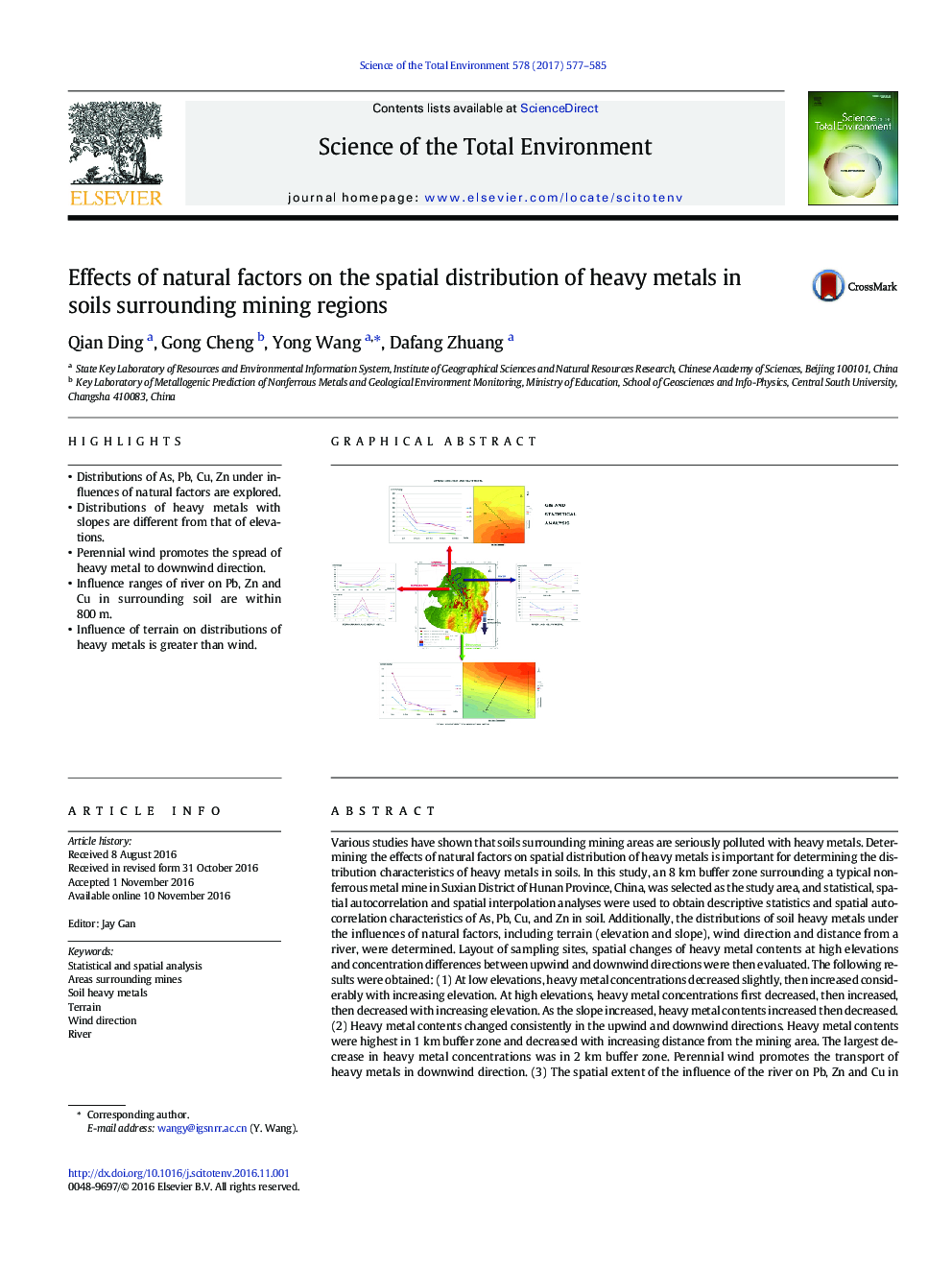| کد مقاله | کد نشریه | سال انتشار | مقاله انگلیسی | نسخه تمام متن |
|---|---|---|---|---|
| 5751515 | 1619713 | 2017 | 9 صفحه PDF | دانلود رایگان |
- Distributions of As, Pb, Cu, Zn under influences of natural factors are explored.
- Distributions of heavy metals with slopes are different from that of elevations.
- Perennial wind promotes the spread of heavy metal to downwind direction.
- Influence ranges of river on Pb, Zn and Cu in surrounding soil are within 800Â m.
- Influence of terrain on distributions of heavy metals is greater than wind.
Various studies have shown that soils surrounding mining areas are seriously polluted with heavy metals. Determining the effects of natural factors on spatial distribution of heavy metals is important for determining the distribution characteristics of heavy metals in soils. In this study, an 8Â km buffer zone surrounding a typical non-ferrous metal mine in Suxian District of Hunan Province, China, was selected as the study area, and statistical, spatial autocorrelation and spatial interpolation analyses were used to obtain descriptive statistics and spatial autocorrelation characteristics of As, Pb, Cu, and Zn in soil. Additionally, the distributions of soil heavy metals under the influences of natural factors, including terrain (elevation and slope), wind direction and distance from a river, were determined. Layout of sampling sites, spatial changes of heavy metal contents at high elevations and concentration differences between upwind and downwind directions were then evaluated. The following results were obtained: (1) At low elevations, heavy metal concentrations decreased slightly, then increased considerably with increasing elevation. At high elevations, heavy metal concentrations first decreased, then increased, then decreased with increasing elevation. As the slope increased, heavy metal contents increased then decreased. (2) Heavy metal contents changed consistently in the upwind and downwind directions. Heavy metal contents were highest in 1Â km buffer zone and decreased with increasing distance from the mining area. The largest decrease in heavy metal concentrations was in 2Â km buffer zone. Perennial wind promotes the transport of heavy metals in downwind direction. (3) The spatial extent of the influence of the river on Pb, Zn and Cu in the soil was 800Â m. (4) The influence of the terrain on the heavy metal concentrations was greater than that of the wind. These results provide a scientific basis for preventing and mitigating heavy metal soil pollution in areas surrounding mines.
156
Journal: Science of The Total Environment - Volume 578, 1 February 2017, Pages 577-585
